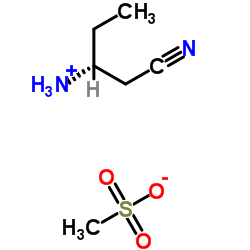262352-17-0
| Name | torcetrapib |
|---|---|
| Synonyms |
1(2H)-Quinolinecarboxylic acid, 4-[[[3,5-bis(trifluoromethyl)phenyl]methyl](methoxycarbonyl)amino]-2-ethyl-3,4-dihydro-6-(trifluoromethyl)-, ethyl ester, (2R,4S)-
Torcetrapib Ethyl (2R,4S)-4-{[3,5-bis(trifluoromethyl)benzyl](methoxycarbonyl)amino}-2-ethyl-6-(trifluoromethyl)-3,4-dihydro-1(2H)-quinolinecarboxylate MFCD08063631 Ethyl (2R,4S)-4-{[3,5-bis(trifluoromethyl)benzyl](methoxycarbonyl)amino}-2-ethyl-6-(trifluoromethyl)-3,4-dihydroquinoline-1(2H)-carboxylate ethyl (2R,4S)-4-[[3,5-bis(trifluoromethyl)phenyl]methyl-methoxycarbonylamino]-2-ethyl-6-(trifluoromethyl)-3,4-dihydro-2H-quinoline-1-carboxylate |
| Description | Torcetrapib(CP-529414) is a CETP inhibitor with IC50 of 37 nM, elevates HDL-C and reduces nonHDL-C in plasma.IC50 value: 37 nM [1]Target: CETP inhibitorin vitro: Torcetrapib dose-dependently increases aldosterone release from H295R cells after either 24 or 48 h of treatment with an EC50 of approximately 80 nM, this effect is mediated by calcium channel as calcium channel blockers completely blocks torcetrapib-induced corticoid release and calcium increase. Torcetrapib (1 μM) significantly increases the expression of steroidogenic gene, CYP11B2 and CYP11B1, in H295R cell lines [2].in vivo: Torcetrapib (< 100 mg, daily) changes the plasma distribution of CETP, as the apparent molecular weight of the CETP has shifted to a larger form, by 2 hours after the dose in healthy young subjects. Torcetrapib treatment with 10 mg, 30 mg, 60 mg, and 120 mg daily and 120 mg twice daily results in 16%, 28%, 62%, 73%, and 91% increases in plasma HDL-C, respectively, with no significant changes in TPC in healthy young subjects. [1] Torcetrapib results in an increase of 72.1% in high-density lipoprotein cholesterol and a decrease of 24.9% in low-density lipoprotein cholesterol, in addition to an increase of 5.4 mm Hg in systolic blood pressure, a decrease in serum potassium, and increases in serum sodium, bicarbonate, and aldosterone, in patients at high cardiovascular risk after 12 months' treatment [3]. Torcetrapib (90 mg/kg/day) results in a 70% inhibition of CE transfer in rabbits fed an atherogenic diet. Torcetrapib (90 mg/kg/day) increases mean HDL-C levels by above 3-fold and apoA-I levels by 2.5-fold in plasma in rabbits fed an atherogenic diet. Torcetrapib-treated animal has a multiple-fold increase in HDL-C AUC and a corresponding reduction in aortic lesion area with 60% reduction of aortic free cholesterol (FC) and cholesteryl ester (EC) in rabbits fed an atherogenic diet. Torcetrapib-treated rabbits stimulate free cholesterol efflux to a significantly greater extent than does sera from control rabbits [4]. |
|---|---|
| Related Catalog | |
| References |
| Density | 1.4±0.1 g/cm3 |
|---|---|
| Boiling Point | 504.8±50.0 °C at 760 mmHg |
| Melting Point | 54-58ºC |
| Molecular Formula | C26H25F9N2O4 |
| Molecular Weight | 600.47 |
| Flash Point | 259.1±30.1 °C |
| PSA | 59.08000 |
| LogP | 7.76 |
| Vapour Pressure | 0.0±1.3 mmHg at 25°C |
| Index of Refraction | 1.512 |
| Storage condition | Store at RT |
| Symbol |

GHS07 |
|---|---|
| Signal Word | Warning |
| Hazard Statements | H302 |
| Hazard Codes | Xn |
| Risk Phrases | 22 |
| RIDADR | NONH for all modes of transport |
| Precursor 9 | |
|---|---|
| DownStream 0 | |
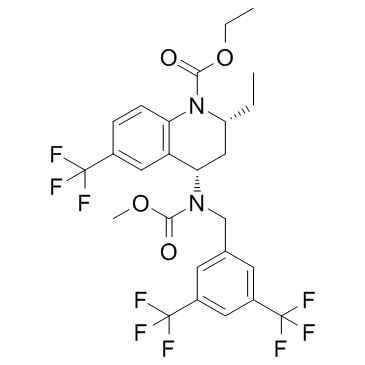
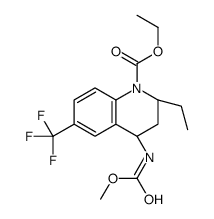
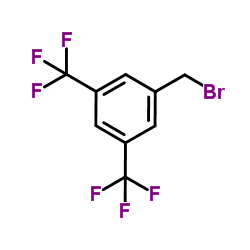
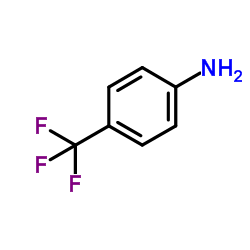
![(3R)-[3-(4-trifluoromethylphenylamino)pentanoyl]carbamic acid methyl ester structure](https://image.chemsrc.com/caspic/365/474645-92-6.png)
![methyl N-[2-ethyl-6-(trifluoromethyl)-1,2,3,4-tetrahydroquinolin-4-yl]carbamate structure](https://image.chemsrc.com/caspic/327/474645-93-7.png)
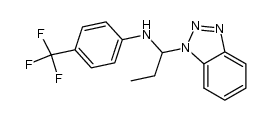

![Carbamic acid, [(1R)-1-(cyanomethyl)propyl]-, 1,1-dimethylethyl ester (9CI) structure](https://image.chemsrc.com/caspic/242/198493-28-6.png)
